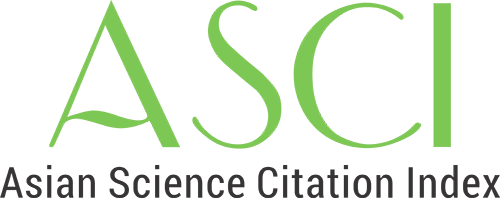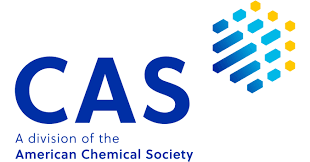Quick Search
Volume: 48 Issue: 1 - 2017
| FRONTMATTERS | |
| 1. | Front Matter Pages I - III |
| ORIGINAL RESEARCH | |
| 2. | Comparison of Two Different Forms of Diabetes Education in A Middle School Seda Cangöl, Eda Cangöl doi: 10.16948/zktb.54126 Pages 1 - 7 INTRODUCTION: Diabetes is more common in women and those living in urban areas is a chronic disease that causes morbidity and mortality. Aging, obesity, hypertension, diabetes mellitus in the family, education, income level and habits are among the factors that increase the risk of diabetes. To gain and maintain positive health behaviors of individual health education is of paramount importance. In this study, the middle school students with the methods of presentation and video training methods are planned to compare the diabetes education. METHODS: The study universe comprised the seventh grade students of a middle school (90 students). This study was designed using a model with one group pretest-posttest control group of quasi-experimental model. Of the participating students, 51.6% were female, and 70.8% were 13 years of age. Ninety students, who were allowed by their parents and met the study inclusion criteria between March and June 2015, were divided into two groups using randomization. The experimental group was the video training group (n=45), and was the presentation group (n=45). A presentation prepared by the researchers was given to the presentation group. A diabetes education video was used with the video group. A socio-demographic information form prepared by the researchers and a diabetes education information form developed to determine the students knowledge levels were administered to both groups two weeks before and two weeks after the diabetes education. Data analysis was performed using descriptive statistics tests, paired sample t test, independent sample t test and the ANOVA test. RESULTS: 51.6% of the students were female, 70.8% of 13 years old. This study found that students who have diabetes history in their family were more likely to get information about diabetes than those who do not (p=0.003). The students scores on knowledge level assessment test before and after the diabetes education were found to be statistically significantly high for both groups (p=0.000). No difference was found between the presentation and video groups after the diabetes education (p>0.05). DISCUSSION AND CONCLUSION: This study determined that both educational methods increased the students knowledge levels. However, no significant difference between the two education methods was found. Therefore, both methods can be used in diabetes education of seventh grade students. |
| 3. | Retrospective Evaluation of the Treatment Approaches of Ectopic Pregnancies According to Gestational Week Nurullah Peker, Senem Yaman Tunç, Sibel Sak, Talip Karaçor, Serdar Başaranoğlu, Talip Gül doi: 10.16948/zktipb.263871 Pages 8 - 11 INTRODUCTION: We evaluated steps leading to the diagnosis and treatment diagnosed with ectopic pregnancy patients. The relationship between gestational age belong to last menstrual period (LMP) and treatment methods were evaluated. METHODS: 192 cases of treated ectopic pregnancy were evaluated according to the diagnostic methods and treatment options between 2011-2014 in our tertiary clinic. RESULTS: The incidence of ectopic pregnancy was found 30.8/1000. A single dose of methotrexate (MTX) treatment success rate was 69.8%, and the success rate of the two-dose medical treatment with MTX was 87.5%. The most common surgical procedure for patients undergoing surgery (54%) were salpengectomy. Follow-up treatment was sufficient in 37 patients (19.2%). When the forms of treatment compared with certain parameters;There were found statistically significant difference between going to surgery with the high β-hCG level, positive fetal cardiac beats (FHB), free fluid in the abdomen, large size of ectopic pregnancy and big gestational ages according to LMP (p <0.05). DISCUSSION AND CONCLUSION: When the ectopic pregnancy diagnosed early; we investigated that patients with small gestational age belong to LMP with follow-up and medical treatment, and also we identified patients with advanced gestatioanal age were treated surgery treatment. |
| CASE REPORT | |
| 4. | Rhinosinusitis Complication: Persistent Subperiosteal Abscess Isa Özbay, Cüneyt Kucur, Onur Erdoğan, Fatih Oğhan, Mehmet Tetikoğlu, Hacı Murat Sağdık doi: 10.16948/zktb. 49109 Pages 12 - 15 The most common orbital complication is subperiosteal abscess. It is characterized by accumulation of the pus between periorbita and bone wall. We presented a case with subperiosteal abscess which was resistant to treatment and occurred as a complication of rhinosinusitis in the light of literature. |
| 5. | Two Cases with Skeletal Dysplasia: A Case Report Elif Özalkaya, Sevilay Topçuoğlu, Arzu Akdağ, Fahri Ovalı, Güner Karatekin, Resul Arısoy doi: 10.16948/zktb.33399 Pages 16 - 19 Skeletal dysplasia occurs due to abnormalities in growth and development of bone. There are over 450 distinct types of skeletal dysplasias. |
| 6. | Atypical Kawasaki Disease: A Case Report Seher Erdoğan, Mehmet Boşnak, Derya Aydın Şahin, Osman Başpınar doi: 10.16948/zktb.34184 Pages 20 - 22 Kawasaki disease is an acute vasculitis that is characterized by prolonged fever, nonpurulent conjunctivitis, oral mucosal inflamation, cervical lympadenophaty, erythema of the hands and feet, and diffuse polymorphous skin rash. The most common age of occurence is between 6 months and 5 years. Coronary artery aneurysms may develop in % 15-25 of untreated children and may lead to sudden death or myocard infarction. So early diagnosis and treatment with intravenous immunoglobulin and acetyl salicylic acid are important to prevent this complications. Here, we present a atypical Kawasaki disease, five year old case was treated on time and had no complication. |
| 7. | A Rare Case: Ovarian Hydatid Cyst Suat Can Ulukent, Merve Aldıkaçtıoğlu Talmaç, Emel Canaz, Alper Şahbaz, Ipek Yıldız Özaydın, Özgür Akbayır doi: 10.16948/zktb.71874 Pages 23 - 27 Introduction: Hydatid cyst is a parasitic disease which is endemic in our country, caused frequently by Echinoccus granulosus and rarely by Echinococcus alveolaris. Although can be found in all organs, hydatid cyst develop most commonly in liver and lung. Ovarian hydatid cyst is quite rare. Case: 24 year-old patient was admitted to our hospital with the complaints of abdominal pain and bloating. Ultrasonography and computed tomography revealed an adnexal mass with the suspicion of a mucinous tumor. Therefore, the patient was operated. Hydatid cyst was the preliminary diagnosis in frozen section examination and albendazole treatment was initiated immediately in the postoperative period. Conclusion: Hydatid cyst should be kept in mind in differential diagnosis of adnexal masses in the endemic countries such as Turkey. Typical ultrasonografic findings of cysts in order to facilitate the diagnosis should be known. The main treatment is the surgical removal of all the cysts; technical precautions should be taken to prevent the spillage of the cyst contents. |
| 8. | Overview of Circumcision Complications with Epidermal Inclusion Cyst Cases Olga Devrim Ayvaz, Ayşenur Cerrah Celayir, Osman Zeki Pektaş, Ceren Özmen, Hülya Yavuz, Nermin Koç doi: 10.16948/zktipb.293011 Pages 35 - 38 After the trauma or surgical procedures epidermal cysts, which occurred implantation of the superficial epidermal tissue to the dermis or subcutaneous tissue, can be seen in any part of the human body and they are real cystic formation., Perimeter of cysts are surrounded by keratinized squamous epithelium, and inside of it is filled with keratin debris. In this study, two patients with penile epidermal cysts growing after the circumcision surgery were presented. |
















